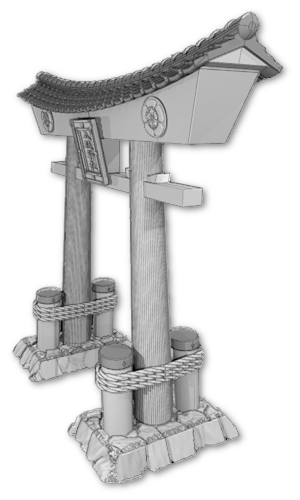
| << Some inspirational customer castle pics 2021-03-26 | Samurai Temple Walls available NOW! >> 2021-03-28 |
The first decision you have to make is what colour you want to paint your temple walls! You've basically got two choices - brown or red?
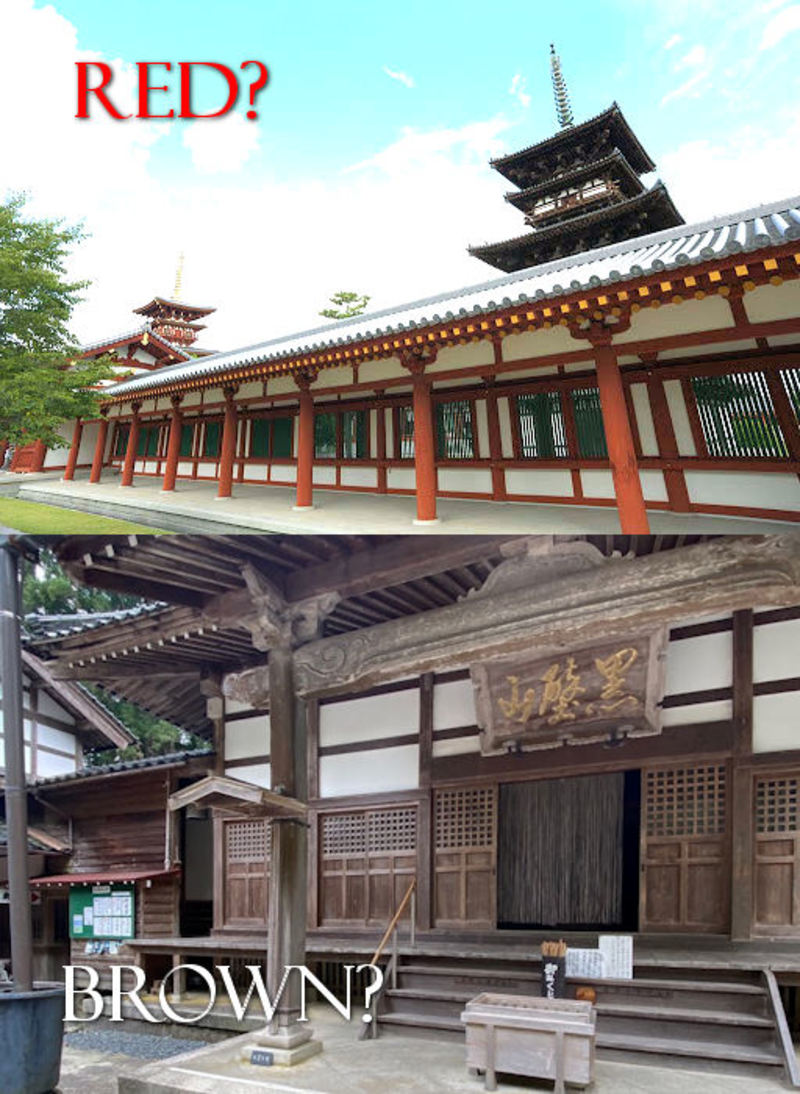
£ Red-painted temple walls (and buildings) are rarer in Japan, although they do exist. Shinto shrines are more usually painted in red, and you can use these temple walls as shrine walls if you want, but Buddhist temples are more usually just left as natural unpainted wood.
So I recommend you do a quick image search to find the colour scheme you like. I asked everybody on Facebook which scheme they preferred, and unfortunately the votes came back pretty much tied! So no help there.
Red temples are perhaps more often found in city settings, where the money is available for grander buildings and regular repainting. But after some thought, I decided to paint mine in old wood colours.... mostly because I enjoy adding aging and weathering to models.
So with that decision out of the way, it's on to the painting guide...
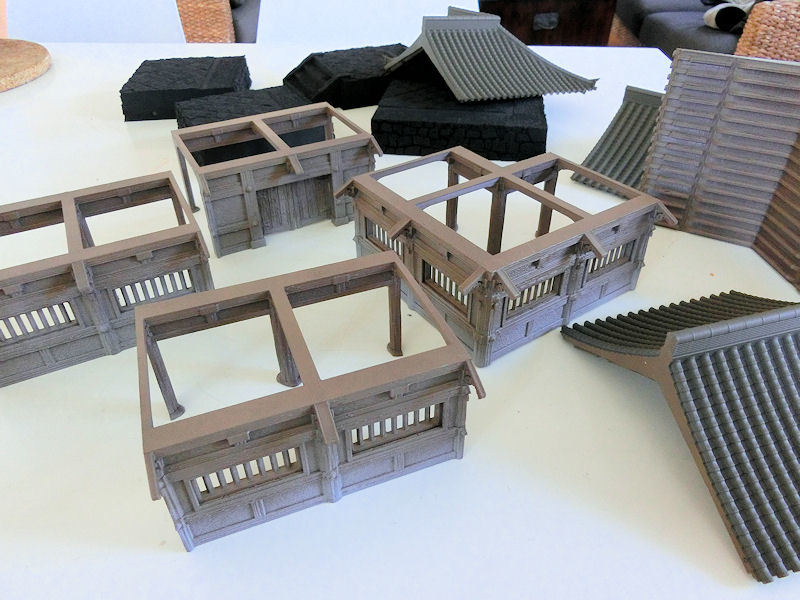
£ Whenever possible I like to speed things along with rattle-can spray undercoats doing double-duty as base colours. So the wall bases were sprayed with matt black, the walls and roof undersides were sprayed in matt brown, and then the roof topsides were sprayed in a dark matt grey.
As a last touch for basecoating, I also sprayed a gentle mist of light grey on the bottom 2cm or so of the outside of the walls. This will work later as water damage and weathering.
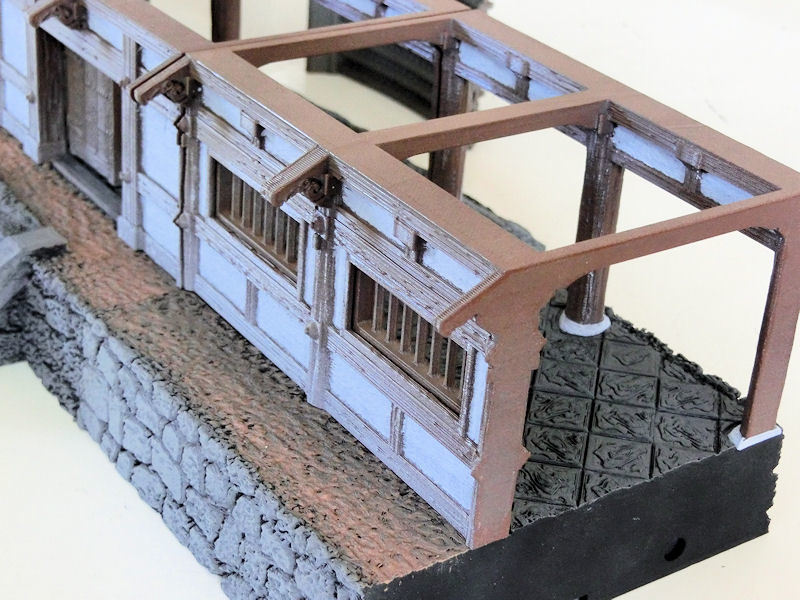
£ There were a few more things that needed basecoats, so I roughly painted the stonework with a medium grey (Neutral Grey by DecoArt), and the dirt path with a brown (Sable Brown by DecoArt).
The most time consuming step was to then paint the wall panels in a light grey with a flat-edged 1cm-wide brush. These would later be finished in white, but I wanted to do the hardest part now, before washes were added - so the edges would blend a little better with a wash on top.
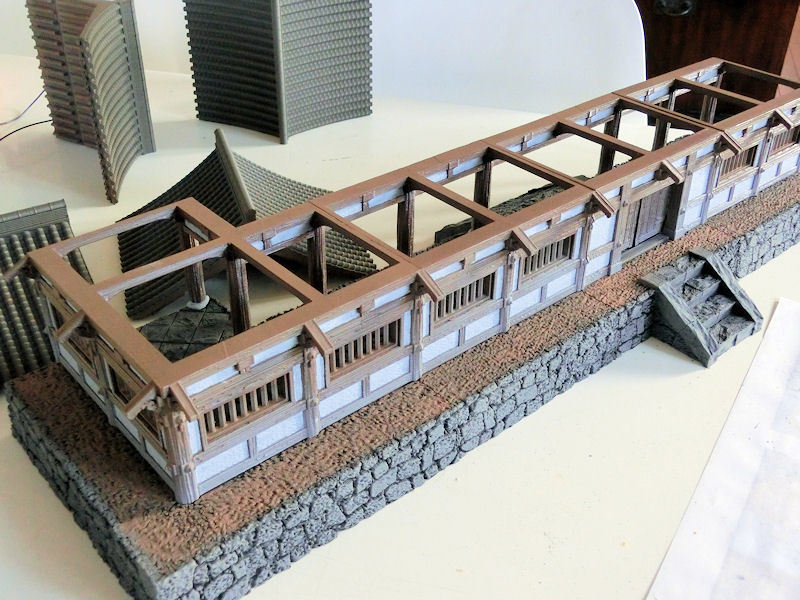
£ Here we are at the halfway stage. The base colours are done, so it's time to see how it looks all lined up!
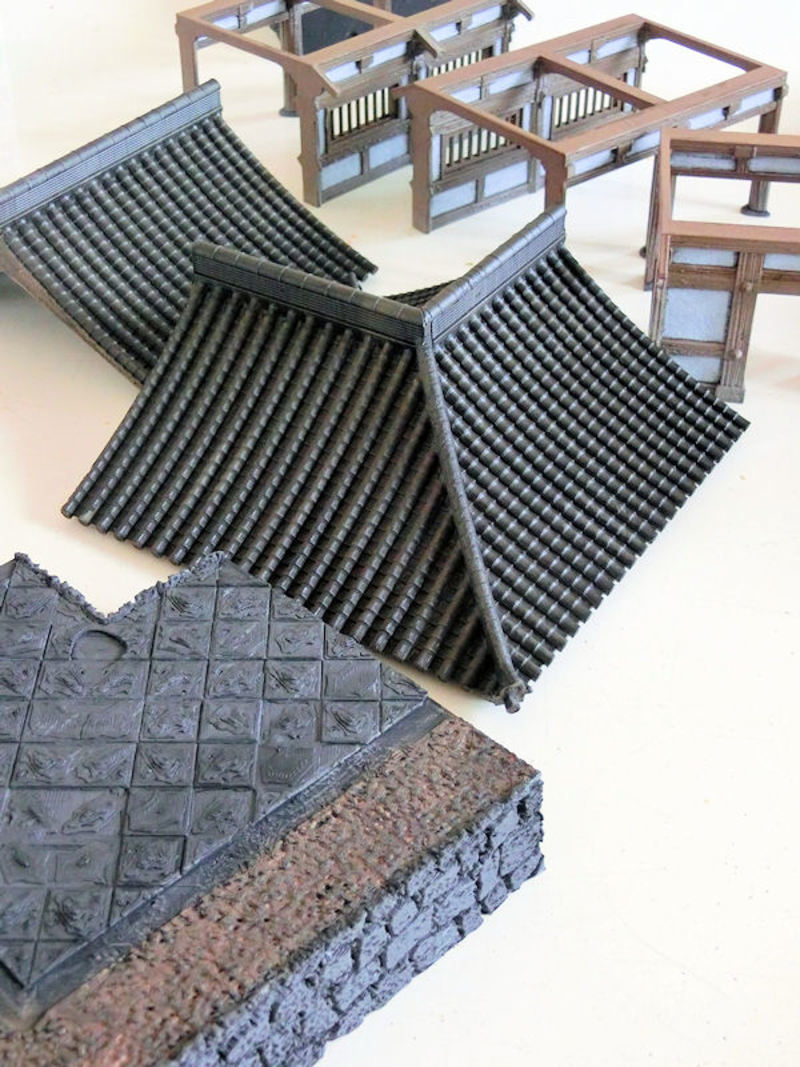
£ Time for washes! The base sections and roof sections all got a heavy black wash to darken things down and add shadows.
The wooden sections got a brown wash just to add some shadows and lines to the wooden areas. I tried to avoid adding wash to the light grey wall panels, but it's not too hard to wipe away smudges.
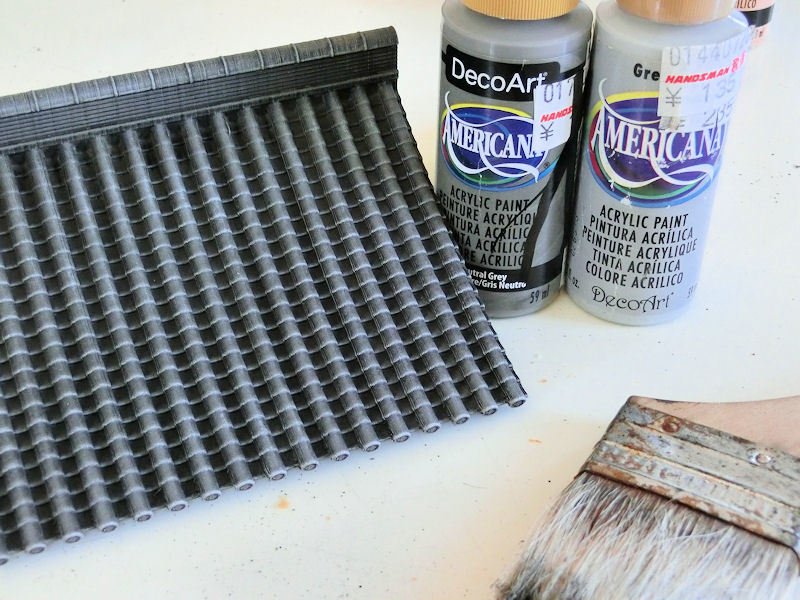
£ Next comes the drybushing, which I did with a 2" wide paintbrush. I first drybrushed the roof sections in a medium grey, and then again very lightly with a light grey. For the light grey drybrush, I recommend gently dragging the brush UP the rooftiles, so it will catch the very edges.
The roof sections were finished!
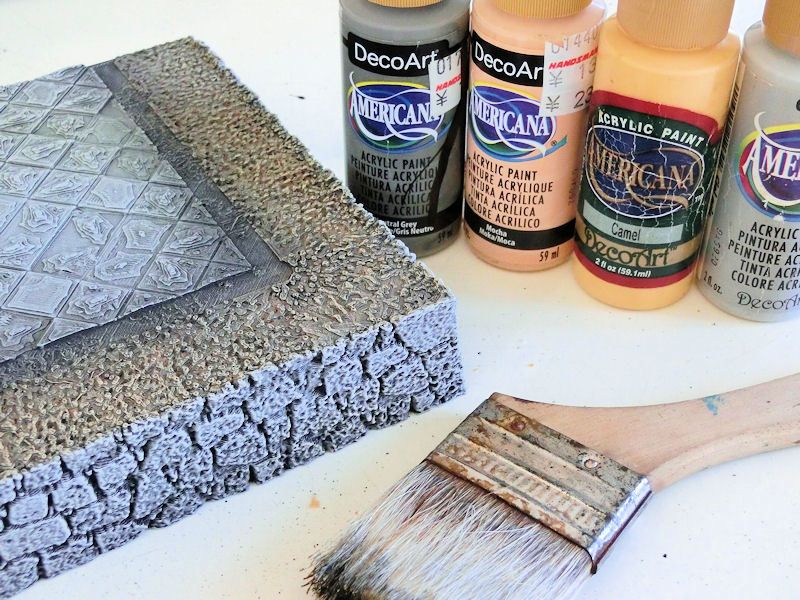
£ The base sections similarly received heavy drybrushing in medium grey and then light grey for the stonework, and also some skin and sand-coloured drybrushes on the dirt areas. I didn't worry too much about keeping it neat, as rocks and dirt tend to blend together anyway in real life.
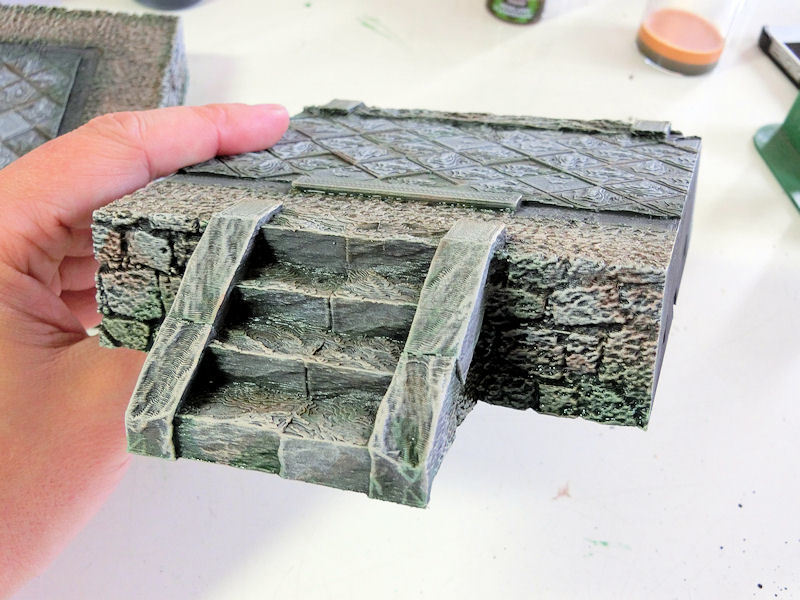
£ With the drybrushing complete, you'll probably find that the stones are too uniform and neat. I started adding washes in various colours to some stones - brown wash on some, red-brown wash on others. You can see some of them on this close-up pics above and below.
One other wash colour I strongly recommend is green! Adding a few millimetres of green wash all along the bottom edge of each section, and pushing it heavily into nooks and crevices, gives a great sense of age. You'll often see this on Japanese stonework, where the sun doesn't burn hot enough to remove the mold. The green on the bottom edge also helps to blend the base sections into a tabletop mat, I find.
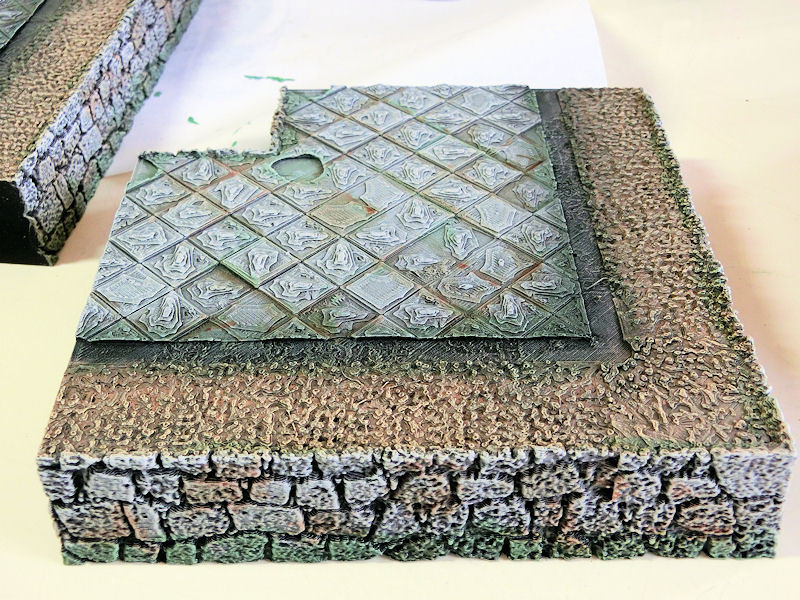
£ The paving stones on the top of each base section also got washes pushed at random into crevices and cracks, just to make it more interesting and less uniform.
The base sections were now complete - just the wall sections to go!
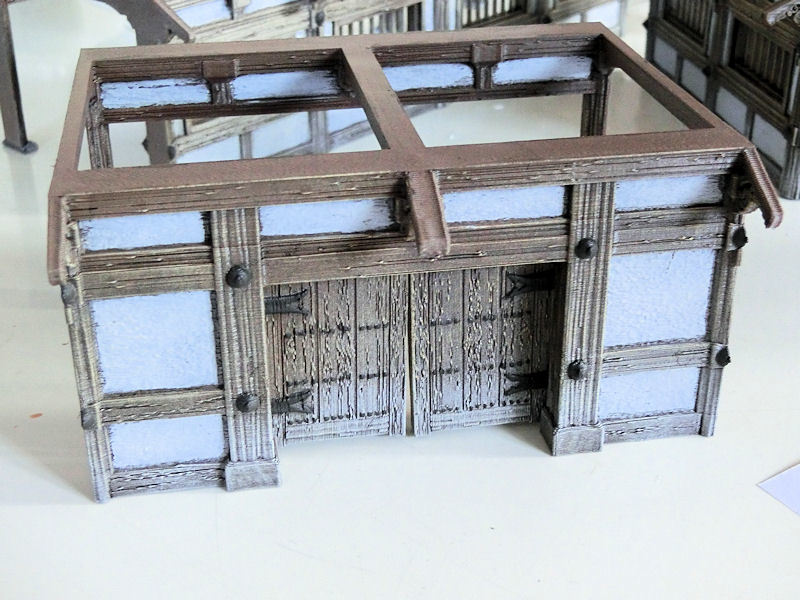
£ Using a 1cm-wide brush, I carefully drybrushed the wooden edges very lightly with a sand colour (Camel by DecoArt), just to bring out the woodgrain, and then switched to a light grey drybrush for the bottom 2cm of each wall section. You don't need to do this on the inside of the walls, but on the outside walls (and doors) it looks great - it's where rain and sun will fade the bottom pieces of wood naturally.
There are metal studs every metre or so along the walls (and the door hinges), and I painted mine in dark grey (Charadon Granite by GW) then gave them a black wash to add some depth.
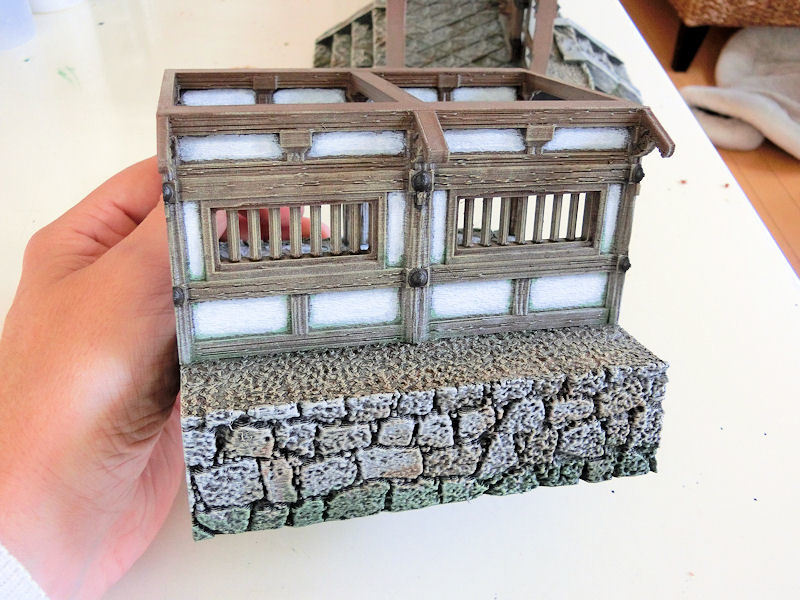
£ Using a firm rounded brush, I then carefully stippled on white to the centre of each wall panel, and pushed it out from there to blend it with the light grey at the edges. One more pass with white stippled on the very centre of each panel, and the walls were ready for their final weathering.
I jabbed some green wash into the bottom corners of the lower wall panels, and the recesses of the thick upright timbers.
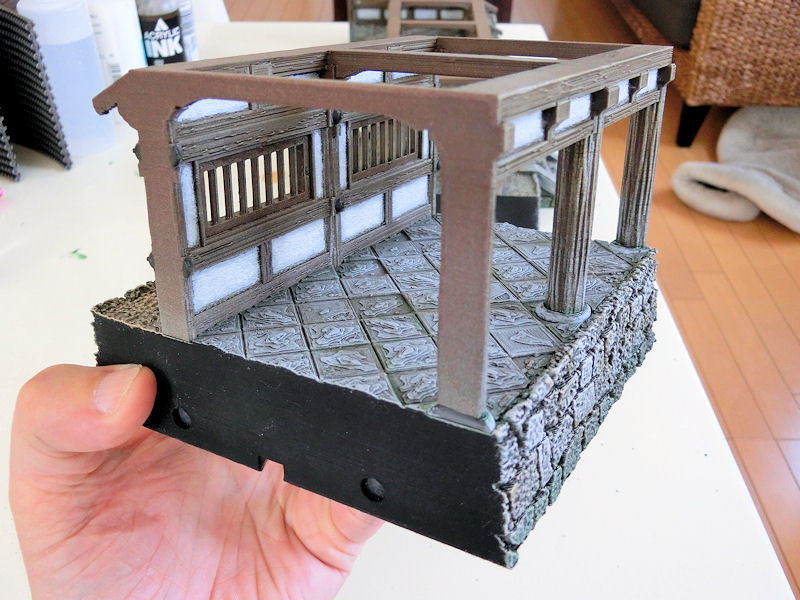
£ All done! With the painting completed, I was finally able to glue the walls to their base sections - although you could leave them separate to give you more gaming opportunities?
| << Some inspirational customer castle pics 2021-03-26 | Samurai Temple Walls available NOW! >> 2021-03-28 |
